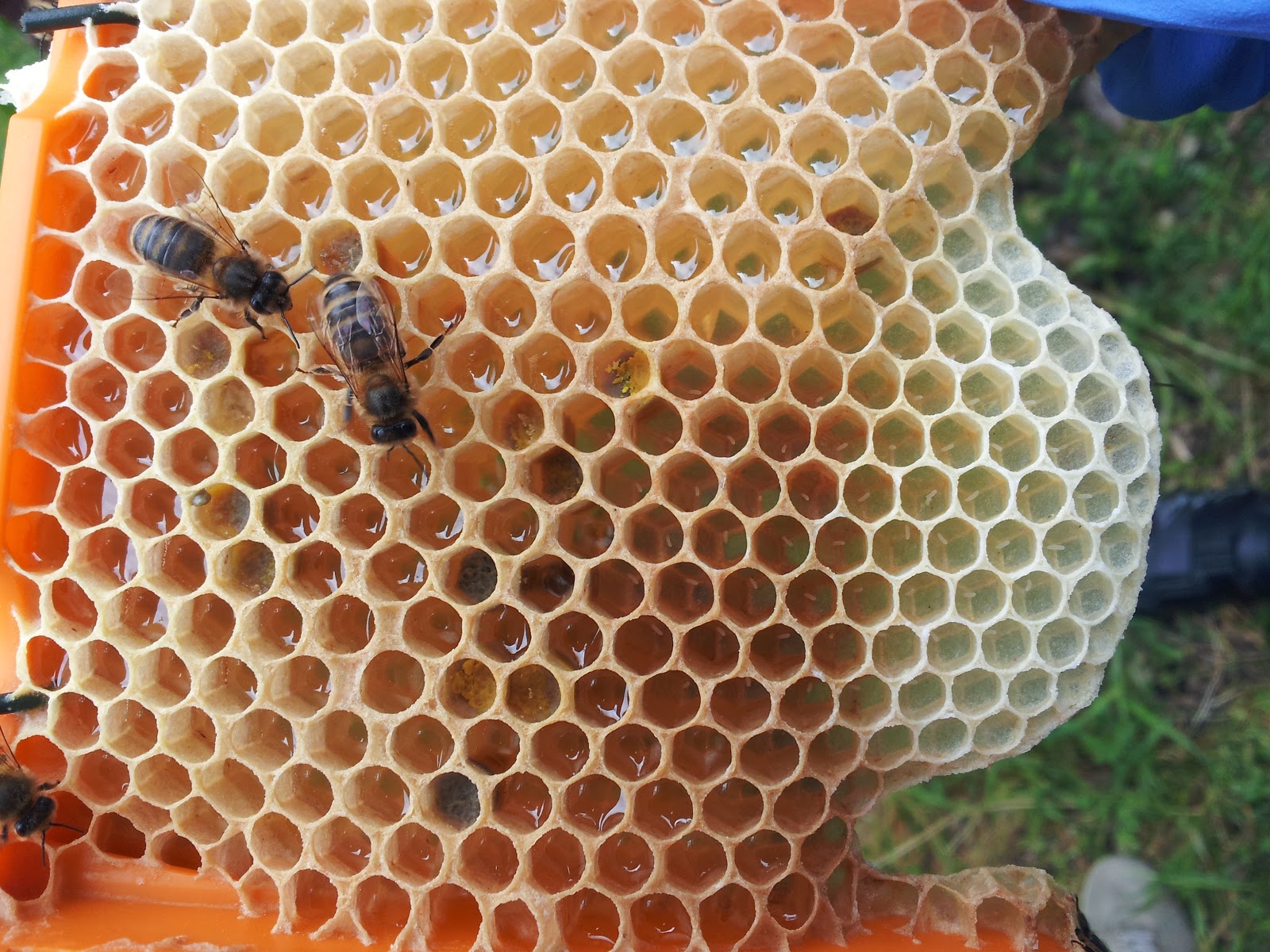Next, we check the 'new' hive. It's the one the old queen came from. Jenny moved the old queen away to prevent the bees from swarming. We don't know whether the new queen has hatched yet. She should take about three weeks. Then it will be another month before she starts laying eggs, which means there will be a gap where no new bees are being raised. Nobody will replace the ones that die, but there will also be fewer mouths to feed.
This was the hive to which Jonathan and I added sugar syrup on Monday. We were worried as the bees didn't seem to be very interested in the sugar - there was as much left now as we had left. On opening the hive there's a surprise, but a good one: the bees have been very active and built lots of new comb since we last opened up the hive two weeks ago. They have clearly been out foraging, which explains why they weren't interested in the sugar syrup. The new comb is very pale and hangs from the frame-less top bars; in the absence of a frame, the bees have built it in organic leaf-shaped clusters suspended from the top bars:
This is just to show how the sugar syrup feeder works: there is a top board with a hole in it:
Then the feeder is placed directly on top of the hole, so the bees can come straight up from the hive through the hole, under the inverted clear plastic cup, then down the sides of the cup to feed on the syrup without drowning in it:
Last, we checked Jenny's own bees in the hive she brought in as 'support' for the new one. There had been lots of growth in that one too: the bees had built a few bridges between the frames:
They had also built a whole new 'wall' of comb in a gap at the back of the hive:
This was the 'super' (the top layer or 'floor' of the hive/building if you like) of the hive; we lifted it up to see how they were doing on the bottom level. As we did so, we ripped through the wall of comb, exposing some larva. Jenny told us that these would not survive so the bees would eat them! No wastage then ( a bit off-putting though)!








No comments:
Post a Comment